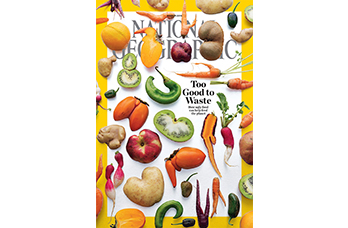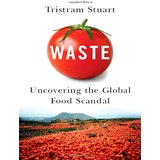If current trends continue, we will have at least two billion more mouths to feed by 2050. That’s in addition to the almost 800 million people who are currently underfed worldwide. How are we going to manage this without a global catastrophe?
Actually, there is a simple w ay — eliminate food waste. I’ve been seeing more and more mention of this in the media. Start with the cover story of the March 2016 issue of National Geographic magazine, entitled “Too Good to Waste.” (http://www.nationalgeographic.com/magazine/2016/03/global-food-waste-statistics) Basically, about a third of the food we produce is never consumed. For fruits and veggies, the estimated loss is fifty-three percent! We lose food at every step of the production-distribution process. For example, twenty percent of fruits and vegetables is lost during picking and sorting, three percent during storage and shipping, two percent during production, nine percent is discarded at wholesalers and supermarkets, and nineteen percent is discarded in homes (we can all work on this one). Less than half is actually eaten.
ay — eliminate food waste. I’ve been seeing more and more mention of this in the media. Start with the cover story of the March 2016 issue of National Geographic magazine, entitled “Too Good to Waste.” (http://www.nationalgeographic.com/magazine/2016/03/global-food-waste-statistics) Basically, about a third of the food we produce is never consumed. For fruits and veggies, the estimated loss is fifty-three percent! We lose food at every step of the production-distribution process. For example, twenty percent of fruits and vegetables is lost during picking and sorting, three percent during storage and shipping, two percent during production, nine percent is discarded at wholesalers and supermarkets, and nineteen percent is discarded in homes (we can all work on this one). Less than half is actually eaten.
What is really tragic is much of this is simply cosmetic. National Geographic calls it “ugly food” — misshapen carrots, for example, that are perfectly good but consumers won’t buy because of appearance — at least supermarkets think no one will buy them.
A good source of information about this subject is the book Waste: Uncovering the Global Food Scandal by Tristram Stuart. I haven’t read this myself, but it was the basis for the National Geographic article.

